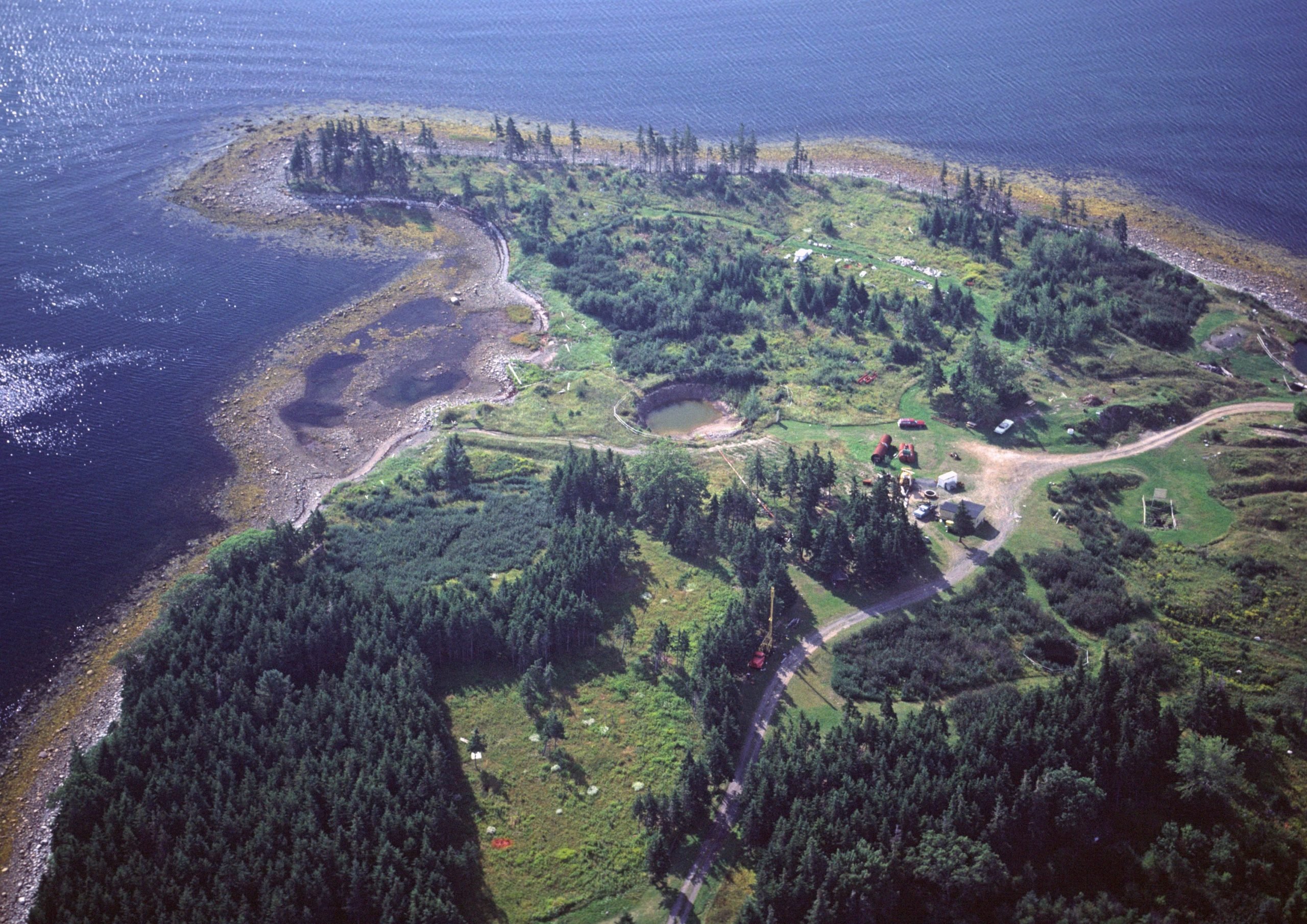
For more than two centuries, treasure seekers have been drawn to a small island off the coast of Nova Scotia, in Newfoundland, Canada. It is said that somewhere on Oak Island, buried 100 feet under the ground, are treasures that may be connected to the notorious Scottish pirate Captain Kidd, or may contain Marie Antoinette’s jewels, or may hold loot from a French fort lost to the English in the Seven Years’ War. Others say the treasures could be connected to nothing less than the Knights Templar, the medieval warriors who supposedly got their hands on the Holy Grail.
Those are the legends, anyway.
Treasure hunting on the 140-acre island, which lies in Mahone Bay, about 50 miles west of Halifax, began in 1795, when a teenaged Daniel McInnes is said to have noticed a depression in the ground near a site where some trees had been felled. Since the area had been a haven for pirates, he thought he might have struck gold. When he and two friends dug there, they turned up a shaft that supposedly went 100 feet deep and had wooden platforms every 10 feet.
One of McInness’s friends, Jack Smith, bought the lot and, along with Simeon Lynds of nearby Onslow, formed the Onslow Company to continue the chase in 1803. By the next year, they reported that at 90 feet deep, they found a flagstone with an encrypted message that, when decoded, read: “Forty feet below, two million pounds are buried.” The stone’s current whereabouts are unknown.
In 1849, Smith formed a new outfit, the Truro Company, to take up the baton, and tried various methods to collect samples from as deep as possible. But major setbacks came when the shaft flooded with water. Noting that the shaft filled along with the rising tide, Smith and his associates concluded that the shaft must be connected to Mahone Bay in a sophisticated booby trap. Other pits dug to try to circumvent the traps also collapsed. The fatalities at the site began in about 1860, when a workman was scalded to death after a boiler ruptured. About this time, the original pit also collapsed.
Various companies dug in several places on the island in fits and starts over the years. An 1871, attempts by the Oak Island Association almost killed two men. The Oak Island Treasure Company focused their attention on the so-called “cave-in pit,” located 350 feet to the east, but they gave up when it, too, flooded. The Oak Island Treasure Company drilled through the collapsed bottom of the original pit and saw their bit, having reached a depth of some 170 feet down, return with flecks of gold and a fragment of sheepskin parchment with fragmentary writing on it. By the turn of the century, many companies had tried their hand at the excavations, including one that counted future president Franklin Delano Roosevelt as a member.
In 1897, tragedy struck again when a rope escaped from the pulley that was lifting a worker up from one of the pits and he fell to his death; it struck yet again in 1965, when four men died as a result of swamp gas or engine fumes. That hasn’t stopped a small army of dowsers, tarot card readers, clairvoyants, channelers, dream interpreters, and psychic archaeologists from making their own attempts, even though the area’s original topography has been so disrupted with the various excavations that old maps are now useless.
Despite promises of endless bounty, there are skeptics. Some point out that the treasure hunter who found the inscribed stone promising two million pounds of treasure was a member of the Onslow Company, and that the promise of such a treasure couldn’t have hurt the sale of stocks in the outfit. (It also seems convenient that the stone has since disappeared.) All those sophisticated booby traps and the tunnels that created them? Possibly natural sinkholes, some geologists say. (The “cave-in pit” was one of them.)
Writing for Skeptical Inquirer in 2000, author Joe Nickell, known for his investigations into paranormal phenomena, outlined possible explanations for several aspects of the legend, and came up with an intriguing explanation: it may all be a legend with its origins in Freemasonry. Buried treasure, he writes, is a major leitmotif in Masonic lore, and a few of the items that have been found on the island—a metal cross with a loop, a set-square, and that inscribed stone—all appear repeatedly in Masonic imagery and literature. What’s more, he points out, various members of the companies that have excavated the spot are Freemasons, including FDR.
There is at least one suggestion that the answer to the mystery might be close: legend has it that the treasure will be found once seven men have died looking for it. (Remember: six have thus far met their fate in the search.) Of course, no one would wish another fatality just for the sake of finding the treasure… or would they?
The Oak Island Money Pit has been the subject of dozens of fiction and nonfiction books, as well as a History Channel series on the people who now own the plot, among them Michigan brothers Rick and Marty Lagina. Their company? It’s called Cerca Trova, Latin for “seek and you shall find.”
The Hunt explores art and ancient relics that are—alas!—lost to time. From the Ark of the Covenant to Cleopatra’s tomb, these legendary treasures have long captured the imaginations of historians and archaeologists, even if they remain buried under layers of sand, stone, and history.